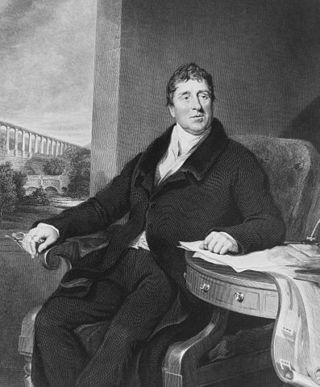
Thomas Telford was a Scottish civil engineer. After establishing himself as an engineer of road and canal projects in Shropshire, he designed numerous infrastructure projects in his native Scotland, as well as harbours and tunnels. Such was his reputation as a prolific designer of highways and related bridges, he was dubbed the Colossus of Roads, and, reflecting his command of all types of civil engineering in the early 19th century, he was elected as the first president of the Institution of Civil Engineers, a post he held for 14 years until his death.

Kirkcudbright is a town, parish and a Royal Burgh from 1455 in Kirkcudbrightshire, of which it is traditionally the county town, within Dumfries and Galloway, Scotland.

Langholm, also known colloquially as the "Muckle Toon", is a burgh in Dumfries and Galloway, southern Scotland. Langholm lies between four hills in the valley of the River Esk in the Southern Uplands.

Annandale and Eskdale is a committee area in Dumfries and Galloway, Scotland. It covers the areas of Annandale and Eskdale, the straths of the River Annan and the River Esk respectively. From 1975 until 1996 it was a local government district.

Major-General Sir John Malcolm GCB, KLS was a Scottish soldier, diplomat, East India Company administrator, statesman, and historian.
Newcastleton, also called Copshaw Holm, is a village in Liddesdale, the Scottish Borders, a few miles from the border with England, on the Liddel Water. It is within the county of Roxburghshire. It is the site of Hermitage Castle.

Admiral Sir Pulteney Malcolm was a British naval officer. He was born at Douglan, near Langholm, Scotland, on 20 February 1768, the third son of George Malcolm of Burnfoot, Langholm, in Dumfriesshire, a sheep farmer, and his wife Margaret, the sister of Admiral Sir Thomas Pasley. His brothers were Sir James Malcolm, Sir John Malcolm, and Sir Charles Malcolm.
Admiral Sir Thomas Sabine Pasley, 2nd Baronet, was an English officer of the British Royal Navy during the nineteenth century who never saw action but served across the globe in numerous positions. A career officer, Pasley inherited his grandfather Sir Thomas Pasley, 1st Baronet's title aged only four and spent much of his career in shore appointments as he paid for and cared for his large family.

The Chambers Institution is a municipal structure in the High Street in Peebles, Scotland. The structure, which was designed to accommodate a library, a museum, an art gallery and Peebles Burgh Hall, is a Category A listed building.
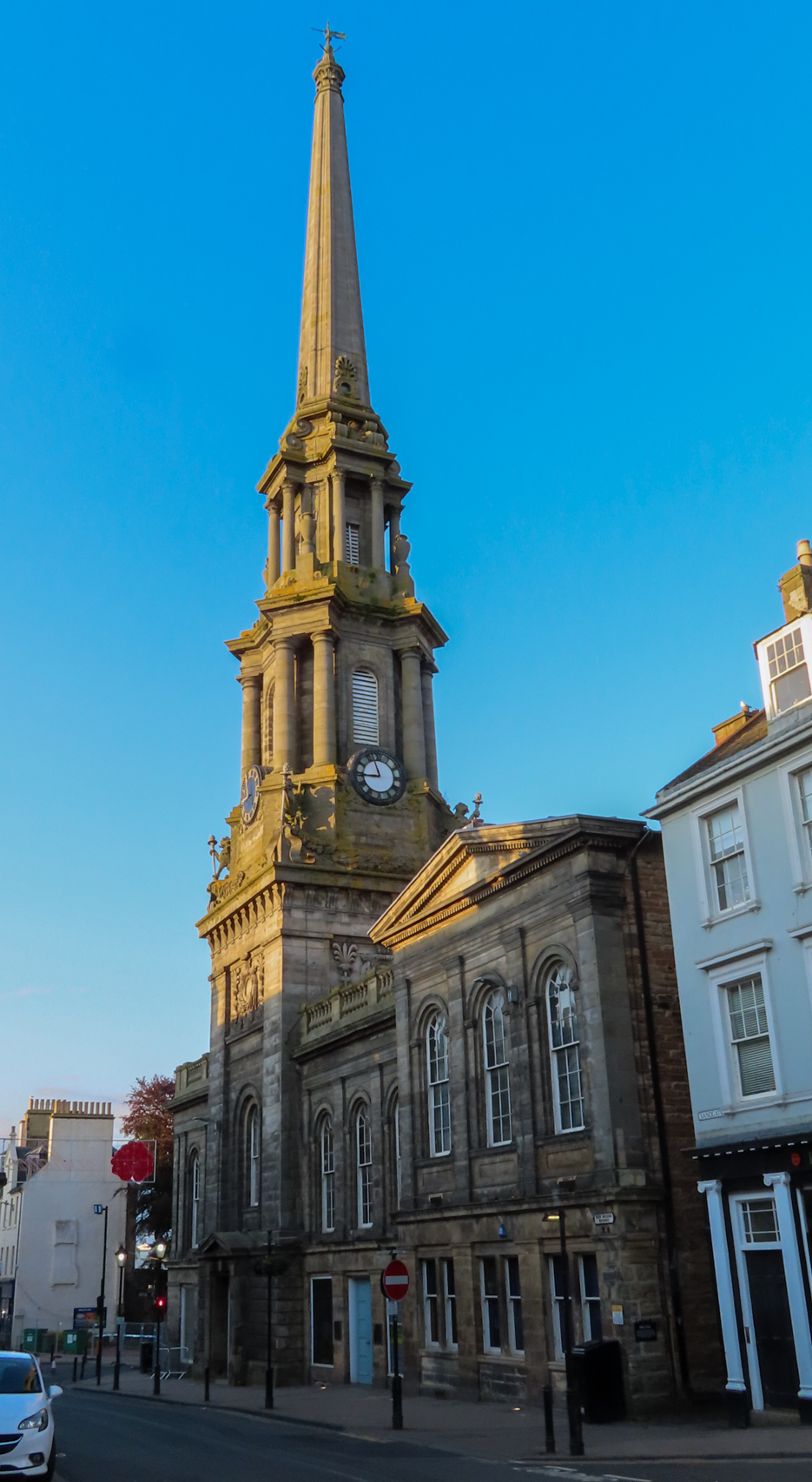
Ayr Town Hall is a municipal building in New Bridge Street, Ayr, Scotland. The town hall, which was the headquarters of Ayr Burgh Council, is a Category A listed building.

St Andrews Town Hall is a municipal structure in South Street, St Andrews, Fife, Scotland. The structure, which is the meeting place of the Royal Burgh of St Andrews Community Council, is a Category B listed building.
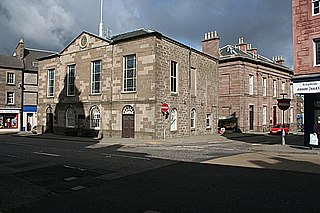
Forfar Town and County Hall is a municipal building in The Cross, Forfar, Scotland. The structure, which serves as the meeting place of Angus Council, is a Category B listed building.
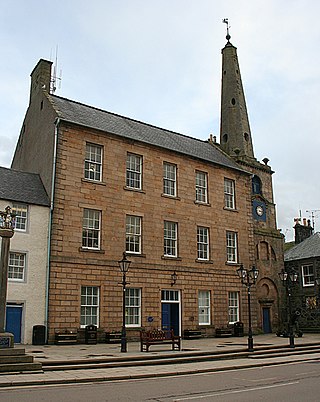
Banff Town House is a municipal building in Low Street, Banff, Aberdeenshire, Scotland. The building, which is used as a customer service point and job centre, forms part of a complex consisting of a steeple, completed in 1767, which is a Category A listed building, and a town house, completed in 1797, which is also a Category A listed building.
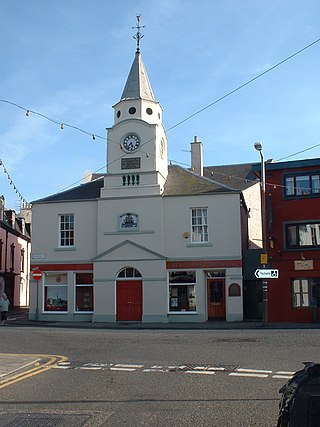
The Old Town Hall is a municipal structure in George Street, Stranraer, Dumfries and Galloway, Scotland. The structure, which is used as a local history museum, is a Category A listed building.
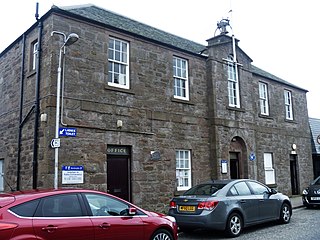
Inverbervie Town House is a municipal structure in Church Street in Inverbervie, Aberdeenshire, Scotland. The structure, which is primarily used as a public library, is a Category B listed building.

Annan Town Hall is a municipal building in the High Street in Annan, Dumfries and Galloway, Scotland. The structure, which accommodates the local library and is also used as a venue for the provision of local services, is a Category B listed building.

Lochmaben Town Hall is a municipal building in the High Street in Lochmaben, Dumfries and Galloway, Scotland. The structure, which accommodates a library and a local customer services point, is a Category A listed building.

Sanquhar Tolbooth is a municipal building in the High Street in Sanquhar, Dumfries and Galloway, Scotland. The structure, which accommodates a local history museum, is a Category A listed building.

Burntisland Burgh Chambers is a municipal structure in the High Street, Burntisland, Fife, Scotland. The building, which is the meeting place of the Burntisland Community Council, is a Category B listed building.

Wick Town Hall is a municipal building in Bridge Street, Wick, in the Highland area of Scotland. The structure, which is used as a community events venue, is a Category B listed building.




















